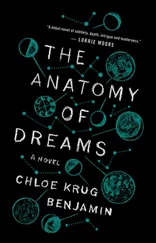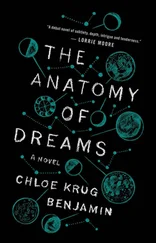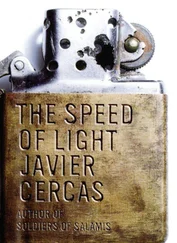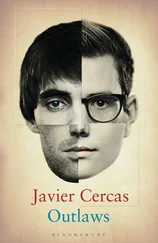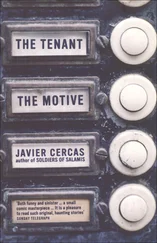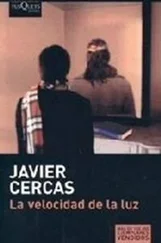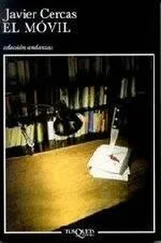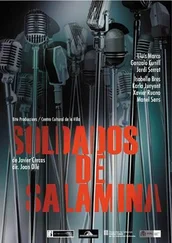EPILOGUE. PROLOGUE TO A NOVEL
The trial of those involved in the 23 February coup d’état was held between 19 February and 3 June 1982 in the paper warehouse of the Army’s Geographical Service, in Campamento, a compound of military installations near Madrid, under strict security measures and over the course of interminable morning and afternoon sessions, in a courtroom crammed with relatives, lawyers, journalists, military committees, invited guests and observers. The tribunal was composed of thirty-two general officers of the Supreme Court of Military Justice, the highest branch of military jurisdiction, and thirty-three people were tried, all military officers except for one civilian. It is a ridiculous figure compared with the real number of those involved in the coup; the reason for this disparity is clear: three days after the attempted coup a special judge was appointed to investigate the case, and from that point on, over the course of the four full months the legal proceedings lasted, Leopoldo Calvo Sotelo’s government did everything it could to limit to the utmost the number of those charged because he thought the shaky post-coup democracy would not withstand a procession of hundreds of top-ranking military officers through the courtroom and the rigorous examination of their civilian accomplices, an examination liable to splatter many members of the ruling class who knowingly or unknowingly prepared the placenta of the coup. In fact, between the time of the coup and that of the hearing, while a campaign in the barracks and the far-right newspapers designed to blame the King in order to exonerate the golpistas was growing stronger, some of the defendants nurtured the hope that the trial would not take place, and shortly before the sessions began the Prime Minister himself met with the editorial directors of the main national newspapers and asked them to avoid publishing news the military would find hurtful, not to turn their pages into involuntary loudspeakers for the golpistas ’ propaganda and therefore to report what happened in the courtroom of the Army’s Geographical Service in a minor key, almost on the quiet. There was a trial, the accuseds’ hopes of impunity were dashed, but the newspapers refused the kind of self-censorship the government requested of them, and over more than three months of public interrogations the Spanish people had daily and exhaustive news of the coup and the golpistas had at their disposal a potent amplifier for each of their words, something that contrary to what the government feared contributed to discrediting them before the majority of the population, although providing them with extra prestige in the eyes of their unconditional supporters.
It was the longest trial in Spanish history. Since the judges and the defendants were military officers and the Army a meticulously inbred institution, it was basically an almost impossible trial: judges and defendants had shared military destinations and quarters, their wives were friends and shopped at the same stores, their children were friends and went to the same schools; some of the judges could have been in the defendants’ position and some of the defendants could have been in the judges’ position. From the first moment the golpistas , their families and their defence lawyers tried to transform the hearing room and surroundings into the stage for a sordid carnival, and up to a certain point they succeeded: barely a day went by without stoppages, protests, shouts, applause, insults, threats, expulsions, interruptions or provocations, to such an extent that as the days went on the accused and their defenders became bolder and bolder until they managed to intimidate the tribunal, which explains why before the preliminary deliberations on the verdict the presiding general, too weak to bear the pressure to which he was being subjected and keep the golpistas ’ bullying under control, was replaced. From the first moment it was also clear that the defence strategy was dividing the accused into two antagonistic groups: one was made up of General Armada, Major Cortina and Captain Gómez Iglesias, Cortina’s subordinate in AOME; the other was made up of the rest, with General Milans and Lieutenant Colonel Tejero at its head. The first kept to defending themselves for better or for worse against the crime of military rebellion and trying to dissociate themselves from the coup and from the rest of the accused; whereas the second group — with the exception of Major Pardo Zancada, who openly accepted responsibility for his part in the events — tried to associate themselves with the first group and, through them, with the King, seeking to convert the court martial into a political trial and presenting themselves as a group of honourable men who had acted under the orders of Armada, who in his turn had acted on the orders of the King, with the aim of saving a country corrupted by a corrupt political regime and a corrupt political class, and in accordance with the military grounds for acquittal of due obedience and the political grounds for acquittal of state of necessity. Legally this line of defence was apparently logical: either Armada had told Milans the truth in their conspiratorial meetings and the coup d’état was an operation desired by the King, therefore according to their defence lawyers the accused were not guilty because they had merely been obeying the King through Armada and Milans, or Armada had lied to Milans and the King did not want a coup and therefore the only one guilty of everything was Armada; in reality it was a contradictory and ludicrous line of defence: contradictory because the due-obedience grounds for acquittal negated the state-of-necessity grounds for acquittal, given that if the golpistas considered a golpe de estado necessary or indispensable it was because they knew the situation the country was in and could therefore not have been acting ingenuously and blindly on the orders of the King; ludicrous because it was ludicrous to pretend that the judicial concept of due obedience should cover outrages like the assault on the Parliament or the invasion of Valencia with tanks. That was how on the basis of contradictions and nonsense the trial deteriorated into a festival of lies in which, except for Pardo Zancada, none of the defendants said what they should have said: that they’d done what they’d done because they believed it was what had to be done, availing themselves of the fact that Milans said that Armada said that the King said that it was what had to be done, and in any case what they would have done sooner or later, because it was exactly what so many of their comrades had been wanting to do for such a long time.
During the hearing the principal protagonists of the coup behaved like what they were: Tejero, like a brutalized lout with a clear conscience; Milans, like a uniformed and defiant filibusterer; Armada, like a millionaire, double-dealing courtier: isolated, despised and insulted by almost all the others in the dock with him, who demanded he inform on the King or admit that he’d lied, Armada on the one hand refused to implicate the monarch, but on the other insinuated with his proclamations of loyalty to the Crown and even more with his silences, which suggested he was keeping quiet to protect the King; as for Major Cortina, he proved to be by far the most intelligent of the defendants: he dismantled all the accusations hanging over his head, dodged all the traps laid for him by the prosecutor and the defence attorneys and, according to Martín Prieto — court reporter for El País during the trial — subjected his interrogators to ‘greater suffering than humans are able to bear’. The final days were difficult for Armada, Cortina and Gómez Iglesias; although for months they had coexisted without too many problems with the rest of the accused in the Geographical Service’s quarters, as the time of the verdict approached and it was obvious that all or almost all of them were going to be found guilty, relations between the two groups became untenable, and the same day that Tejero tried to lay into Cortina at the end of the morning session the tribunal decided to confine the three dissidents to a separate wing of the quarters for their protection. Finally, on 3 June, the tribunal delivered its judgement: Tejero and Milans were condemned to thirty years in prison — the maximum sentence — but Armada received only six, as did Torres Rojas and Pardo Zancada, and all the rest of the commanders and officers got off with sentences of between one and five years; all except Cortina, who was acquitted, as were one Brunete captain and one of the captains and nine of the lieutenants who had accompanied Tejero into the Parliament. It was not just an indulgent sentence, but practically an invitation to repeat the coup, and the government appealed it before the civilian magistrates of the Supreme Court. Less than a year later the final court passed the definitive sentence; the majority of the accused saw their sentences at least doubled: Armada went from six years to thirty, Torres Rojas and Pardo Zancada from six to twelve, Ibáñez Inglés from five to ten, San Martín from three to ten, and so on, and even the lieutenants who stormed the Parliament and had been declared innocent by the first court were also found guilty. The government did not appeal Cortina’s acquittal or that of the two captains, and the Supreme Court simply confirmed the thirty years handed down to Milans and Tejero.
Читать дальше

